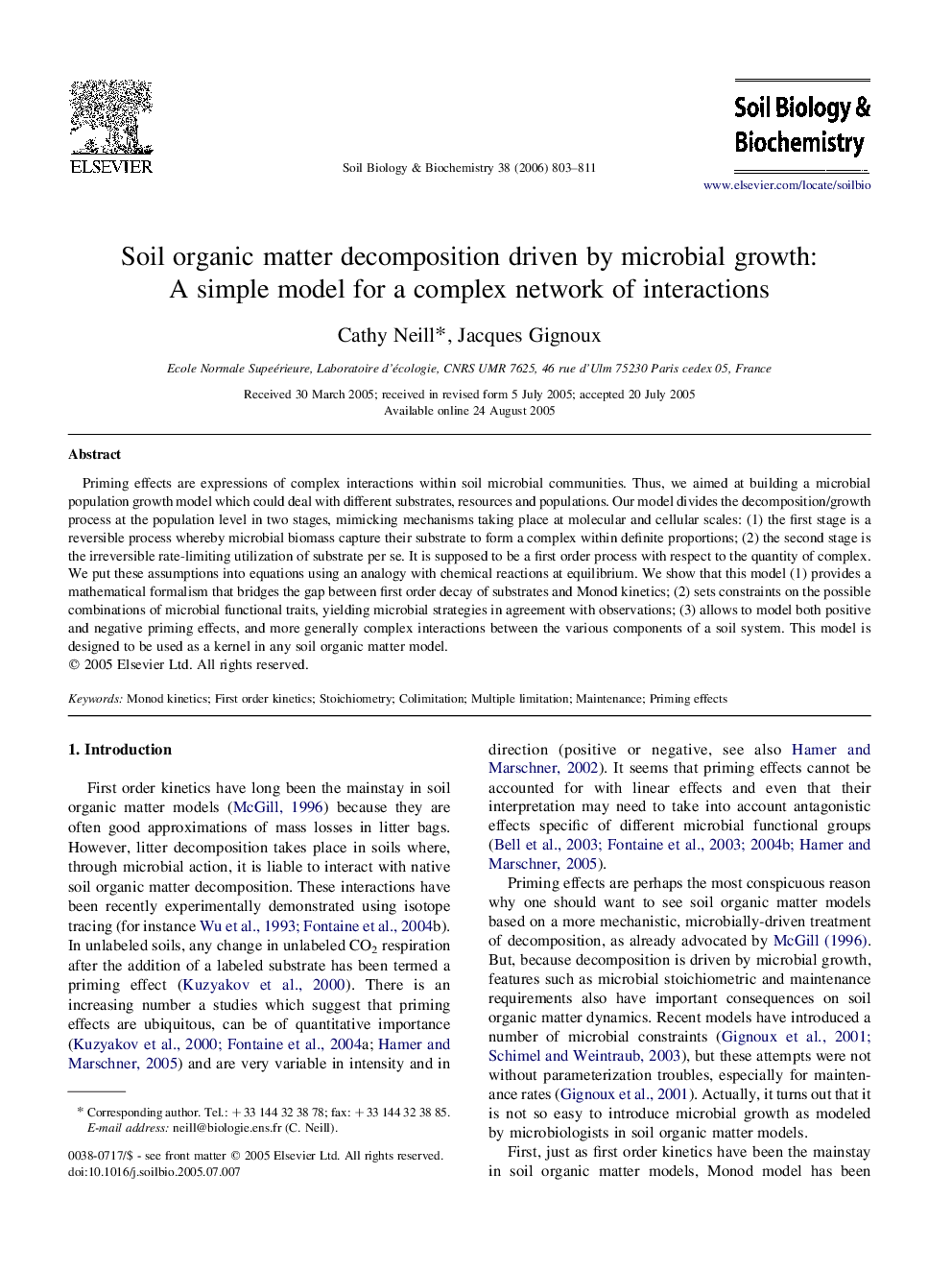| Article ID | Journal | Published Year | Pages | File Type |
|---|---|---|---|---|
| 2026627 | Soil Biology and Biochemistry | 2006 | 9 Pages |
Priming effects are expressions of complex interactions within soil microbial communities. Thus, we aimed at building a microbial population growth model which could deal with different substrates, resources and populations. Our model divides the decomposition/growth process at the population level in two stages, mimicking mechanisms taking place at molecular and cellular scales: (1) the first stage is a reversible process whereby microbial biomass capture their substrate to form a complex within definite proportions; (2) the second stage is the irreversible rate-limiting utilization of substrate per se. It is supposed to be a first order process with respect to the quantity of complex. We put these assumptions into equations using an analogy with chemical reactions at equilibrium. We show that this model (1) provides a mathematical formalism that bridges the gap between first order decay of substrates and Monod kinetics; (2) sets constraints on the possible combinations of microbial functional traits, yielding microbial strategies in agreement with observations; (3) allows to model both positive and negative priming effects, and more generally complex interactions between the various components of a soil system. This model is designed to be used as a kernel in any soil organic matter model.
